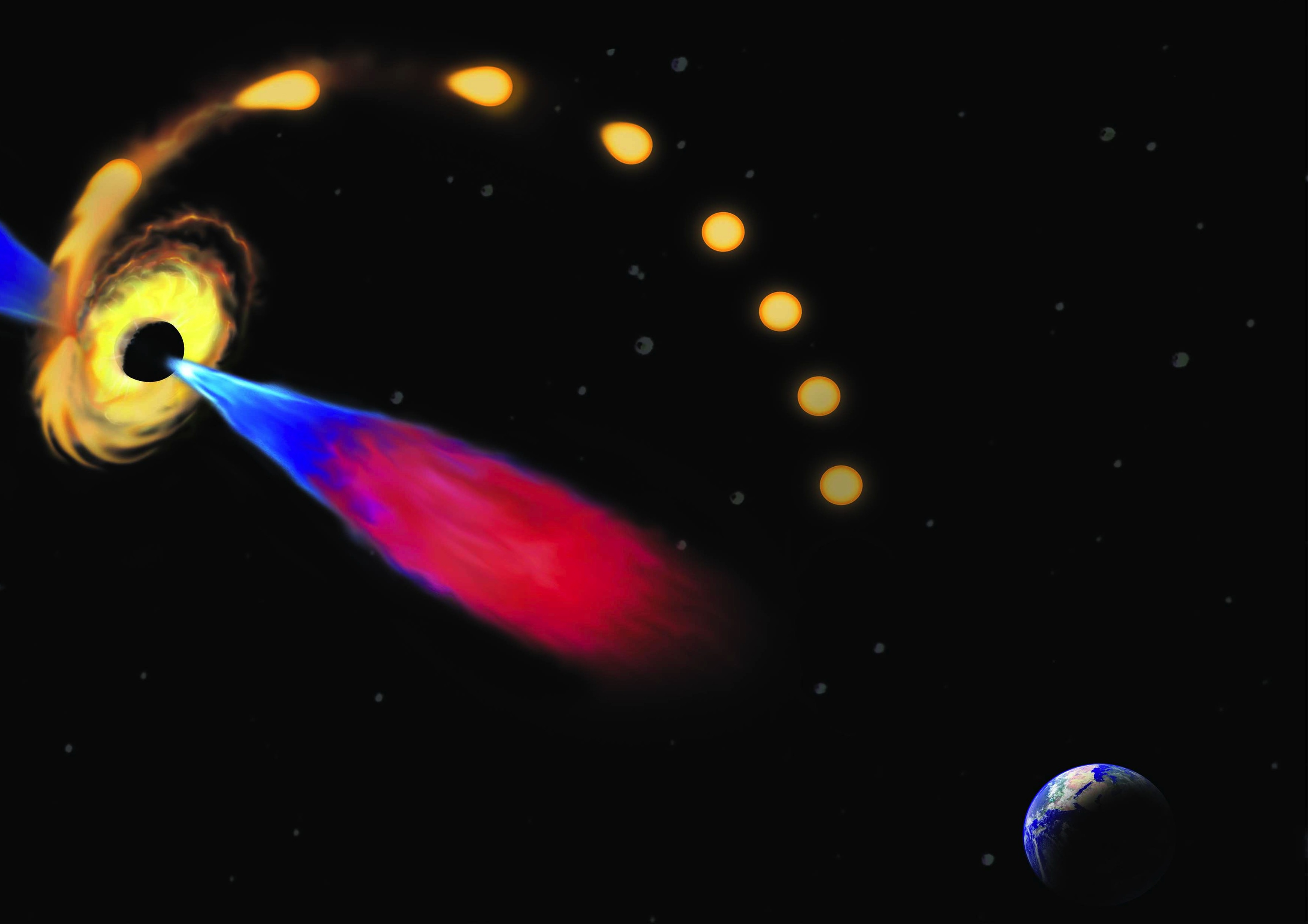By Ruth Steinhardt
A team of astrophysicists for the first time watched from the beginning as a supermassive black hole drew in a star, ripped it apart and ejected an outflow of matter—a cosmic burp—moving at nearly the speed of light.
Their research, published in Science in late November, tracks the star’s destruction and the simultaneous eruption of a short, spectacular radio flare.
“We have never seen matter from a star streaming into a supermassive black hole and the black hole emitting a stream of matter at the same time,” said Alexander van der Horst, an assistant professor of physics at the George Washington University who was part of the team. “This connection between the matter streaming in and matter streaming out can teach us about the formation of jets. This is a very important boost for this area of research.”
Supermassive black holes—the largest of the ultra-dense areas of space whose gravitational pull not even light can escape—are believed to be at the center of most massive galaxies, including our own Milky Way.
The emission of a jet of matter from a supermassive black hole is not new to scientists. In fact, such jets are observed emanating from many celestial objects, including neutron stars, dying massive stars and stars at the beginning of their lifecycle. But many of their properties, especially their formation, remain mysterious.
“Normally, these jets in supermassive black holes are very steady,” Dr. van der Horst explained. “The black holes are just there, continuously emitting particles. But there are a lot of questions about how they’re formed. So now that we know how to look for them—since we’ve seen the transition, the jet turning on and off—maybe we can see a lot of them. That will help us understand how black holes and jets work.”
Such an understanding could do more than just increase the store of scientific knowledge. Innovation in astronomy has led to the development of technologies now essential to daily life, including panoramic photography, the Global Positioning System (GPS) and solar panels.
“In our drive to understand the universe better, astronomers have to come up with many innovative techniques and instruments,” Dr. van der Horst said. “[These] usually have a much larger application than ‘just’ getting a better understanding of our universe.”
The destroyed star, about the size of our sun, was first observed in its bright death throes by a team from Ohio State University using an optical telescope in Hawaii.
“We could find it with radio telecopes because it was relatively nearby,” Dr. van der Horst said.
At a distance of about 300 million light years, the star’s home galaxy in question is Earth’s neighbor in cosmic terms. Previous observations were at least three times farther away.
Alerted to the event, Dr. van der Horst’s team—led by Sjort van Velzen, a Hubble fellow at Johns Hopkins University—quickly turned radio telescopes in the Netherlands and United Kingdom on the trapped star. It was as early in the timeline of stellar death by black hole as radio information has ever been gathered. By combining it with data from optical and X-ray telescopes, the team could glean what a press release from Johns Hopkins University called “a multi-wavelength portrait” of the entire event.
The finding by radio telescope is particularly significant, Dr. van der Horst said, because such instruments have only recently been made sensitive and wide-ranging enough to capture similar occurrences on a regular basis.
“Most of the sky is fairly static and only changes over millions or billions of years,” he said. “But there are some events that take place on more of a human timescale—days, weeks, even seconds. If you want to look for those events, you need a wide horizon and a fast response time to interesting events, and radio telescopes have never before had this big field of view or versatility. But now that they’re catching up with optical and X-ray telescopes, they’re starting to have a big impact.”
As even better instruments are built to survey the skies, Dr. van der Horst said, his team’s next step would be to deal with the massive influx of data.
“We have to compile all this information and get a complete picture of what is going on so we can come up with a detailed and thorough explanation of this light and radiation that we see,” he said. “Then we can see how it fits into the big picture of supermassive black holes and the jets that are so ubiquitous in the universe.”


